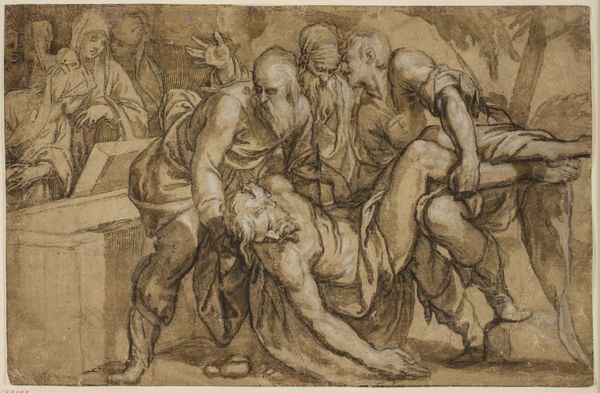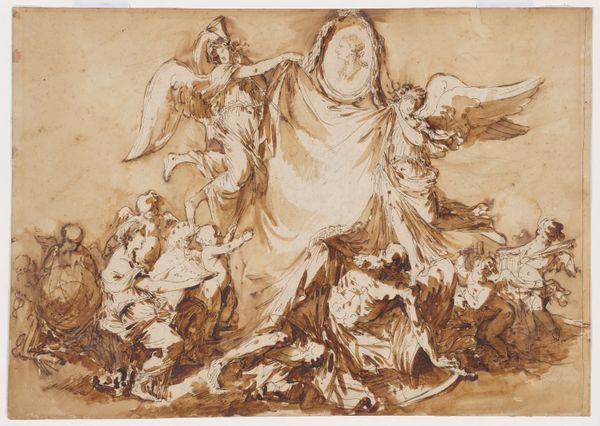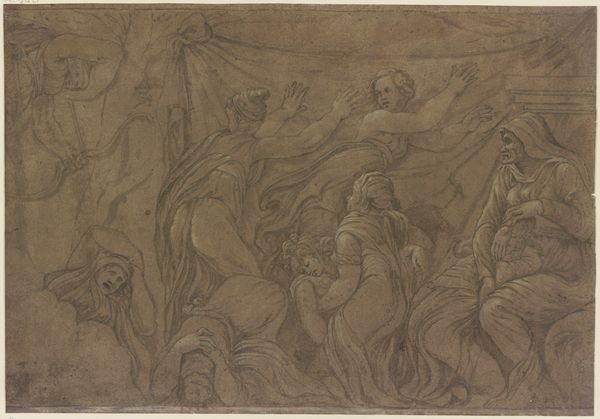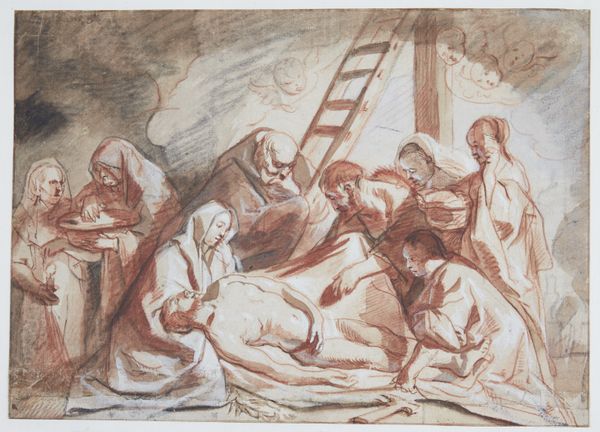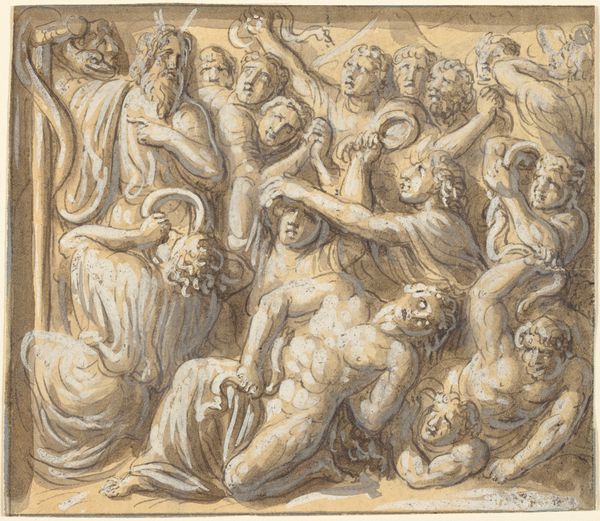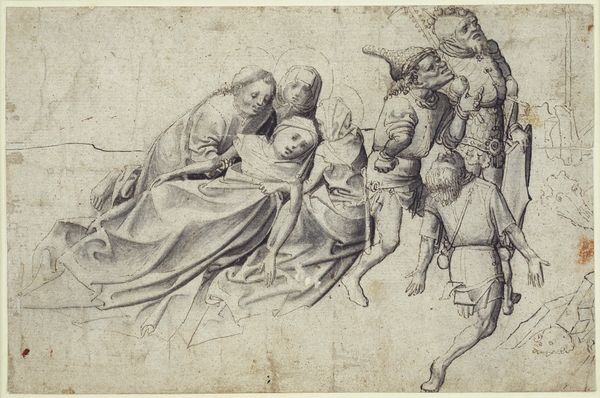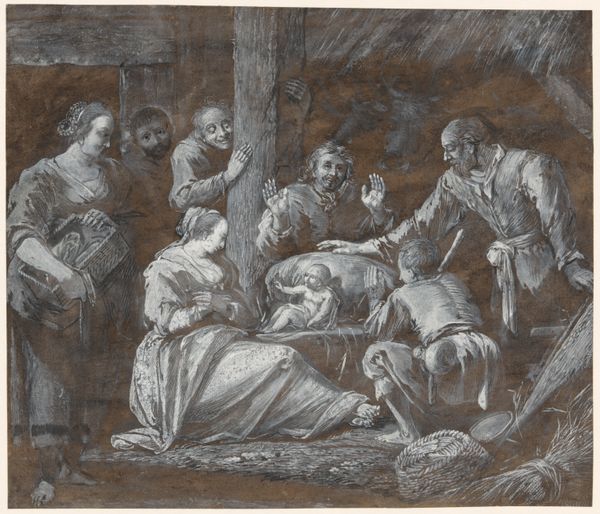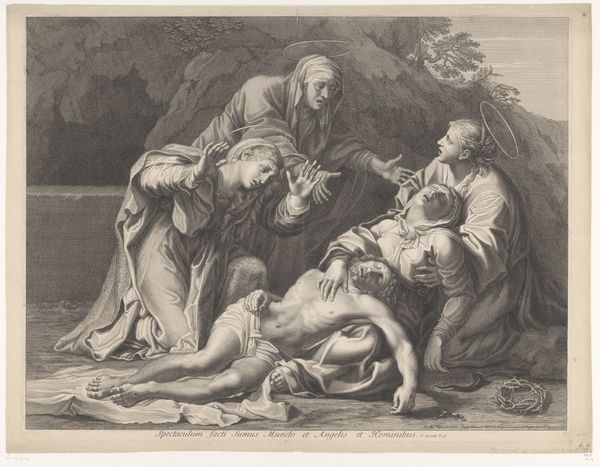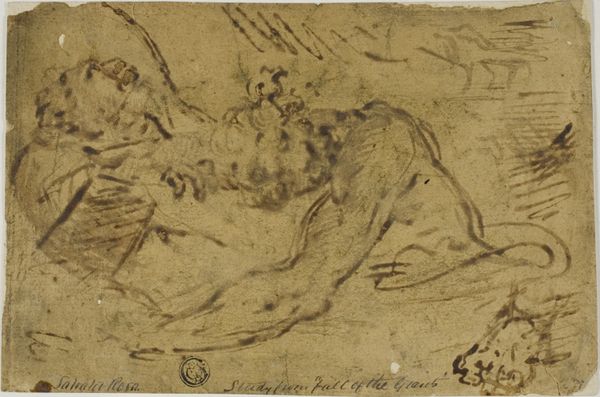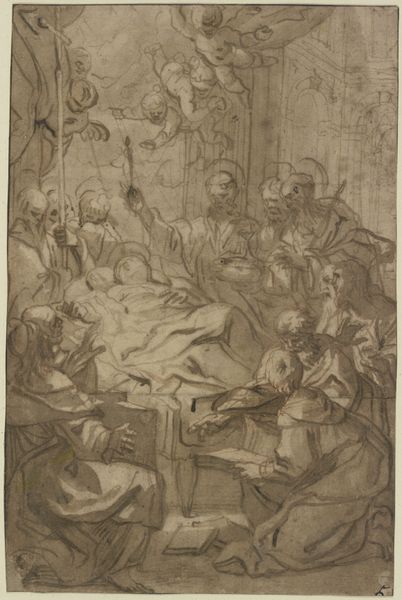
drawing, charcoal
#
drawing
#
venetian-painting
#
toned paper
#
charcoal drawing
#
mannerism
#
figuration
#
oil painting
#
charcoal
#
history-painting
Dimensions: overall: 27 × 40.9 cm (10 5/8 × 16 1/8 in.)
Copyright: National Gallery of Art: CC0 1.0
Editor: This is "Christ Carried to the Tomb," a charcoal and oil drawing by Palma il Giovane, dating between 1607 and 1620. The muted tones give it such a somber, reflective feel. It's amazing how he captures the weight, both physical and emotional, of that moment. What stands out to you when you look at it? Curator: The figures themselves seem to exist in a timeless space, don't they? The scene is universally understood, and he distills an intense moment of communal grief. Note how the shrouded body acts as a visual keystone, almost as if the weight of faith and history rests upon them. Editor: I see that. The shrouded figure as a keystone, tying the composition together. It’s interesting that you see universality. Do you think the choice of drawing material also speaks to this idea? Curator: Absolutely. Charcoal possesses a primal quality. It's one of humanity's earliest forms of artistic expression. In choosing it, Palma subtly nods to the enduring nature of suffering, memory, and faith. It transcends individual identity. Consider also, how the figures' faces are obscured or downcast, anonymizing them in a way. The viewer is positioned as witness, asked to consider their role. Editor: That makes so much sense. I hadn't considered the connection between the anonymity and the primal nature of the material. I will look at this piece in a new light now. Curator: Indeed, it’s as if he invites us to become participants in a timeless drama of loss and remembrance. By exploring cultural memory embedded in the symbolism and exploring these pieces through materials used, a universal continuity through art can be discovered.
Comments
No comments
Be the first to comment and join the conversation on the ultimate creative platform.

